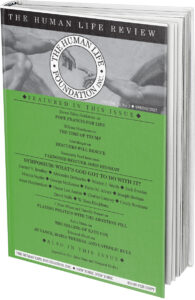The Roe v. Wade Deception
Abortion is legal through all nine months of pregnancy, under all circumstances, in every state, and Americans are not allowed to vote on it. That is what the Supreme Court mandated when it handed down the Roe v. Wade decision in 1973. Furthermore, the Supreme Court justices misrepresented their own decision by pretending that their famous “trimester scheme” (explained below) would enable the states to outlaw late-term abortion. But they included a deadly loophole. Here is how the pretense works:
- Pregnancy is divided into three trimesters lasting three months each. According to Roe, in the first trimester the child can be aborted for any reason. But in the second trimester, the child can also be aborted for essentially any reason. So why make the distinction when there is no actual difference? Because by phrasing it in this way, allies in media and education could truncate the law and state that “Abortion is legal during the first trimester.” The deceptive implication is that it is illegal after that.
- The states, we are told in the decision, can make abortion illegal in the third trimester, except when the woman’s “life or health” is endangered. “Health” was defined in Doe v. Bolton (a companion case decided the same day) as “all factors.” To emphasize the breadth of the “health” loophole, the High Court defined “all factors” as including “physical, emotional, psychological and familial,” the last of these not even being an actual medical health consideration at all. “Marital status” and “age” were also deemed “health” considerations. This definition of “health,” which eviscerated the “trimester compromise,” is not included in Roe v. Wade, but both decisions, the justices declared, were “of course, to be read together.” Most people have never heard of Doe v. Bolton.
- When Roe stipulates that “health” considerations could take precedence over prohibitions on third-trimester abortion, there is no mention of how the word is defined in Doe. When Doe defines “health,” there is no reference back to Roe’s trimester scheme, or how it relates to that case. Only one doctor has to agree with the abortionist that there is a “health” problem that justifies a third-trimester abortion.
Roe v. Wade justified making late-term abortion illegal (or pretended to) by claiming there was a “compelling state interest” in protecting “potential life” as it “approached viability.” In reality, as just explained, the majority of justices denied the states the ability to protect the unborn at any stage.
Pennsylvania lawmakers, referring to the “compelling state interest” in protecting “potential life,” later passed a law requiring that a second doctor be present at the abortion of a viable child to care for the infant should it be accidently born alive. The abortion industry opposed this law, and in Thornburgh v. American College of Obstetricians and Gynecologists (1986), the Supreme Court ruled against the viable unborn child. Chief Justice Warren Burger dissented, writing sardonically, “Undoubtedly the Pennsylvania Legislature added the second-physician requirement on the mistaken assumption that this Court meant what it said in Roe concerning the ‘compelling interest’ of the states in potential life after viability.”
While pro-choicers insist there are many laws that prohibit late-term abortion, Roe is federal law, which takes precedence over state legislation. Pro-choicers also claim that the 1992 Casey v. Planned Parenthood decision seriously altered Roe. While it is true that Roe’s trimester scheme was replaced by a “viability” standard, Doe’s “health” loophole remained intact, making the destruction of viable infants just as possible under Casey as it had been under Roe.
This mind-boggling deception did not happen by accident. It is not about liberal or conservative jurisprudence; judicial activism or strict constructivism … this is corruption. The Supreme Court did not just violate the Constitution; it suspended the Constitution in a written coup d’état, damaging our democracy, and encouraging the establishment of a judicial oligarchy. In the half-century since Roe v. Wade, the debate has been mis-framed as “should all abortion be illegal?” when it should be framed as “should any abortion be illegal?” This is the question posed by Dobbs v. Jackson Women’s Health Organization, the Mississippi case now before the Court.









